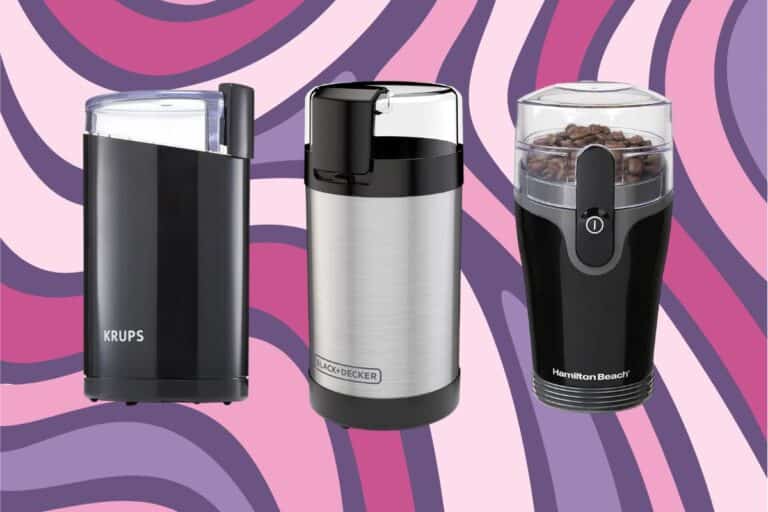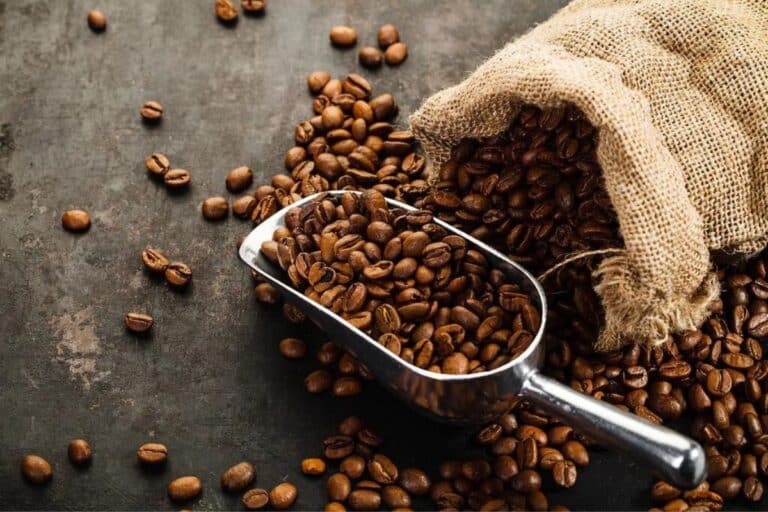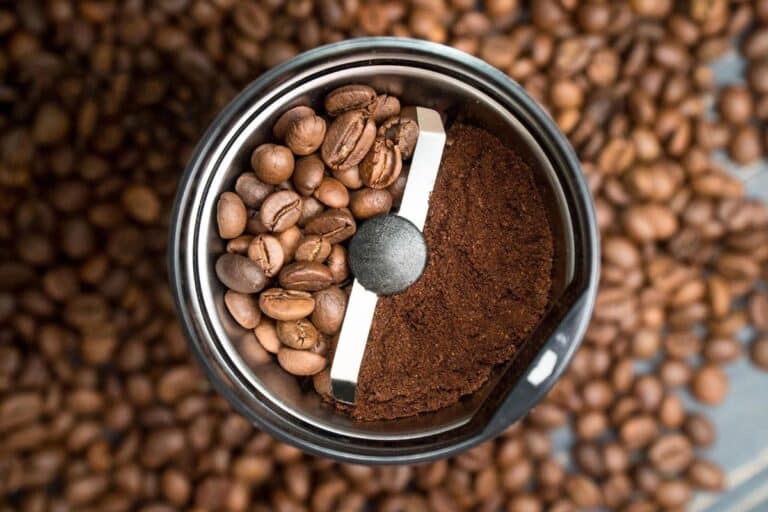Coffee stands as one of the most beloved beverages around the world, with millions starting their day with a cup of this aromatic brew. It’s more than just a morning ritual; coffee is a significant cultural and social phenomenon that brings people together, whether in cafés, offices, or kitchens. The global demand for coffee underscores its economic importance as well, with numerous countries depending heavily on coffee exports for their economic sustainability.
Does Coffee Go Bad?
Yes, coffee can go bad, especially if improperly stored. Whole beans remain fresh longer than ground coffee, with a shelf life of up to 9 months in the pantry and up to 3 years in the freezer. Ground coffee can last up to 5 months in the pantry and up to 2 years in the freezer, but it becomes stale and loses flavor and aroma more quickly than whole beans.
Given coffee’s widespread popularity, understanding its shelf life and how to preserve its quality is crucial for both casual drinkers and connoisseurs alike. The freshness of coffee can dramatically influence its flavor and aroma, which are the hallmarks of an enjoyable cup. Over time, coffee can degrade due to various factors such as exposure to air, light, and moisture, leading to a stale and flat taste. Therefore, knowing how to store coffee properly to maintain its freshness not only enhances your drinking experience but also ensures you get the best value from your purchase. This article aims to delve into whether coffee goes bad, how to detect it, and the best practices for storing your coffee to preserve its quintessential qualities.
Understanding Coffee Freshness
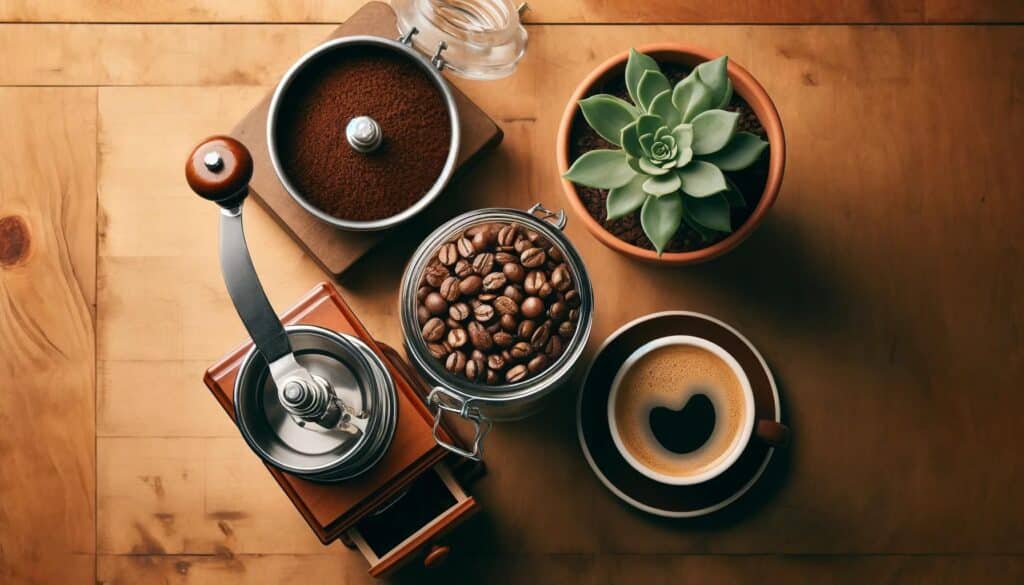
Definition of Freshness in Coffee
Freshness in coffee refers to how recently the coffee beans were roasted, and its preservation until brewing. Fresh coffee is typically characterized by a vibrant flavor profile and a pleasing aroma that captures the essence of its origin’s terroir. Coffee’s freshness can profoundly affect the sensory experience, from the initial smell of the beans to the final sip of the brewed coffee.
Explanation of What Constitutes “Fresh” Coffee
A batch of coffee is generally considered fresh if it’s consumed within a few weeks of its roasting date. During this period, the coffee beans are at their peak flavor, having retained the essential oils and volatile compounds responsible for their distinctive taste and aroma.
Impact of Freshness on Flavor and Aroma
The freshness of coffee directly impacts its flavor and aroma:
- Flavor: Fresh coffee offers a complex and clear taste profile, allowing the subtle nuances of its origin to shine through. As coffee ages, it may become more bitter and lose its characteristic brightness.
- Aroma: The aroma of coffee is most potent shortly after roasting. Stale coffee typically loses this complexity, resulting in a less inviting and flat olfactory experience.
Factors Affecting Coffee Freshness
Roasting Date and Its Significance
The roasting date of coffee beans is crucial as it marks the beginning of the degassing process, where carbon dioxide is released, and oxidation begins. This date helps consumers gauge the freshness of the coffee and determine the optimal period for consumption.
Grinding Process and Surface Area Exposure
Grinding coffee increases its surface area, accelerating oxidation and the loss of volatile compounds. Therefore, coffee is best ground right before brewing to maintain its freshness and aromatic qualities.
Packaging Methods and Their Roles in Maintaining Freshness
Proper packaging is essential to prolong the shelf life of coffee by protecting it from external elements:
- Airtight containers: These prevent the entry of air, which can oxidize the beans and degrade quality.
- Opaque packaging: This protects beans from light, which can also cause deterioration.
- Valve-sealed bags: These allow gases from the beans to escape without letting air in, balancing the internal environment to favor freshness.
Understanding these factors and how they affect coffee’s freshness can significantly enhance one’s coffee experience, ensuring each cup is as delightful as intended.
Does Coffee Expire?
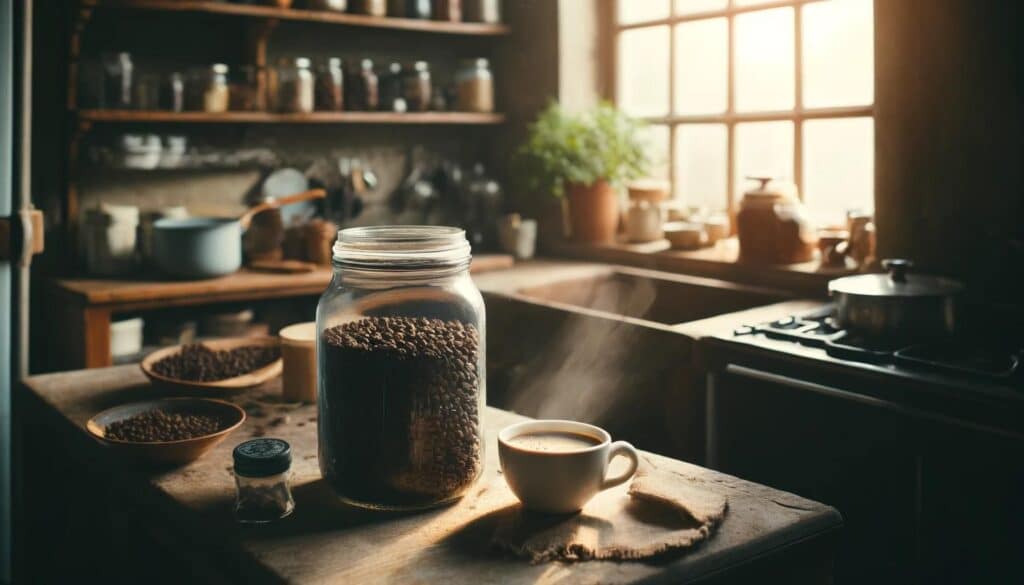
Shelf Life of Coffee Beans
While coffee doesn’t “expire” in the traditional sense—meaning it doesn’t become unsafe to consume after a certain date—it does lose its freshness and optimal flavor characteristics over time.
Typical Shelf Life of Roasted Coffee Beans
Roasted coffee beans are generally considered best used within a few weeks of their roasting date, typically up to a month for peak freshness. However, they can still be enjoyed for up to six months if stored properly, although the quality and flavor will not be at their peak.
Differences in Shelf Life Between Whole Beans and Ground Coffee
- Whole Beans: They tend to retain their flavors and are best consumed within one to two months post-roasting but can last up to six months while still delivering a good quality taste.
- Ground Coffee: Ground coffee degrades faster due to a higher surface area exposed to oxygen, moisture, and light. It is best used within a few weeks of grinding, and its decline in quality becomes noticeable much sooner than with whole beans.
Signs of Expired Coffee
To determine whether coffee has gone past its prime, several indicators can be observed:
Visual Indicators
- Lack of Oils: Fresh beans typically have a slight sheen of oil on the surface, which diminishes as they age.
- Discoloration: Any obvious fading or change in the color of the beans might suggest staleness.
Aroma Changes
Loss of Vibrant Smells: One of the first signs that coffee is no longer fresh is a noticeable decrease in its aromatic intensity. Fresh coffee emits a strong, inviting smell, whereas older coffee will have a more muted aroma.
Taste Deterioration
Staleness or Bitterness: As coffee ages, the flavor profile flattens and becomes more bitter. The intricate flavors and nuances of the coffee’s origin are lost, and the brew may taste generally stale and unpleasant.
By paying attention to these signs, coffee lovers can ensure they are consuming their coffee when it is at its best, or understand when it’s time to replace older, stale beans with a fresh batch.
How to Properly Store Coffee
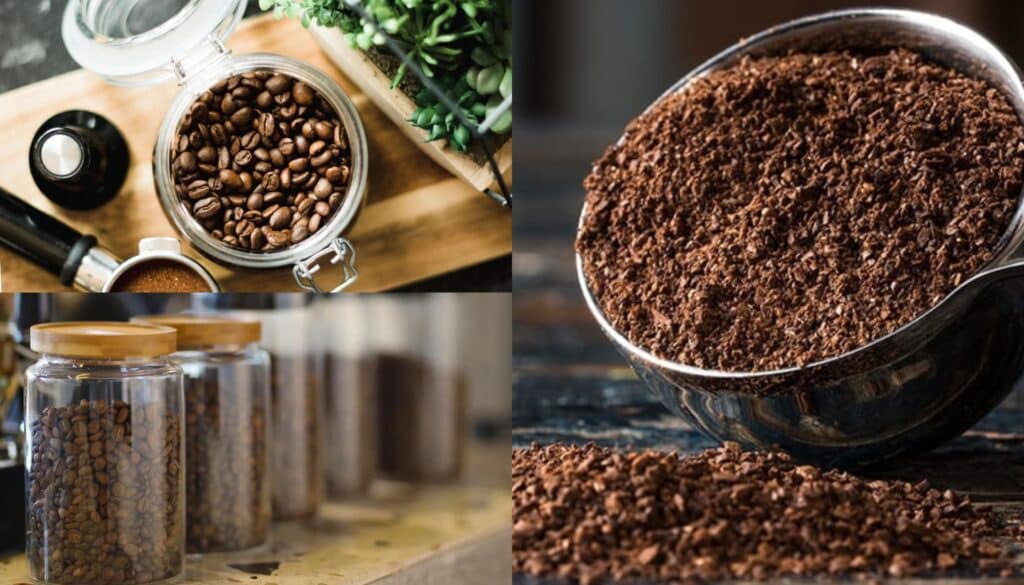
Proper storage is crucial for maintaining the freshness and flavor of coffee. Understanding how to store coffee effectively can significantly extend its enjoyable life and ensure that every cup is as delicious as intended.
Best Storage Practices
Ideal Storage Conditions
Cool, Dark, and Dry Places: Coffee should be stored in a cool, dark, and dry place to prevent the degradation of its natural oils and flavors. Heat, light, and humidity are the main enemies of coffee, as they accelerate the staling process and can introduce unwanted flavors.
Types of Containers
- Airtight Containers: Coffee should be kept in airtight containers to prevent exposure to air. Oxygen can oxidize coffee, leading to stale and flat flavors.
- Opaque Containers: Light can degrade the quality of coffee, so opaque containers are preferable to transparent ones for storage.
- Material Considerations: Containers made of non-reactive materials like ceramic, glass, or metal are ideal because they won’t impart any odors or flavors to the coffee.
Common Storage Mistakes
Exposure to Air, Light, Heat, and Moisture
- Air: Coffee should not be left in its original packaging unless it has a one-way valve; even then, transferring to an airtight container after opening is best.
- Light and Heat: Avoid storing coffee near sources of heat (like stoves or heaters) or in direct sunlight (such as on a kitchen counter near a window).
- Moisture: Coffee should never be stored in damp areas as moisture can lead to mold growth and further degradation of the coffee’s quality.
Storing Coffee in the Fridge or Freezer: Pros and Cons
- Refrigeration: Generally not recommended because the fluctuating temperature from opening and closing the fridge can cause condensation, negatively affecting the coffee. The fridge can also introduce odors that coffee may absorb.
- Freezing: Can be effective for extending the shelf life of unopened coffee for up to a month or more. However, coffee should be stored in airtight, vacuum-sealed containers to prevent moisture. Once removed from the freezer, it should not be returned to avoid condensation and flavor loss.
By adhering to these guidelines, you can maximize the lifespan and enjoyment of your coffee, ensuring that it remains as fresh and flavorful as possible from the first to the last cup.
The Impact of Brewing on Coffee Freshness
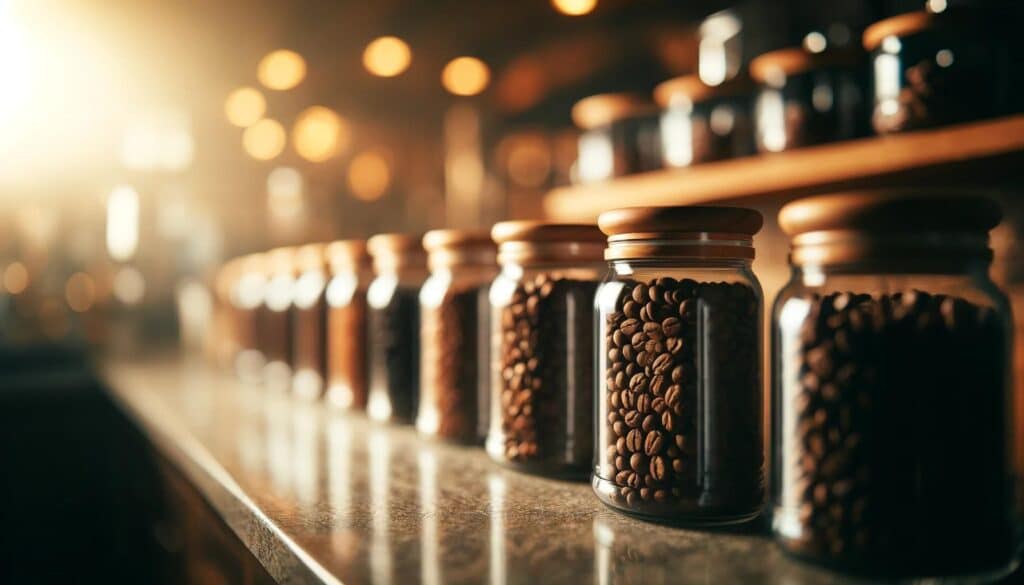
The way you brew coffee can significantly influence the taste and overall experience, especially when comparing the results of using fresh versus stale coffee. Understanding these dynamics can help optimize the quality of your coffee, regardless of its age.
Brewing with Fresh vs. Stale Coffee
- Fresh Coffee: Brewing with fresh coffee typically results in a vibrant, complex flavor profile. You can expect bright acidity, clear flavor notes (like fruit, chocolate, or nuts, depending on the bean), and a pleasing aroma that reflects the coffee’s origin and processing method.
- Stale Coffee: Stale coffee often leads to a brew that tastes flat, bitter, and lacking in aroma. The subtle nuances of the bean’s flavor profile are diminished, and the coffee might taste overly harsh or woody, with a muted nose.
How the Brewing Method Can Compensate for or Highlight Staleness
Different brewing methods can either mitigate or exacerbate the effects of staleness in coffee:
- Espresso Machines: Due to the high pressure and short extraction time, espresso machines might mask some of the staleness in coffee by emphasizing more of the residual oils and flavors that remain. However, the intense focus on flavor can also make the bitterness more pronounced.
- French Press: This method allows for a full immersion of the grounds in water, which can help extract more flavor from stale coffee. However, without a paper filter, more of the oils and fine particles are in the final cup, which can also include the less pleasant flavors of older coffee.
- Pour-Over/Drip Brewing: With a cleaner and more precise extraction, pour-over methods can highlight the freshness of coffee by allowing the subtle flavors and aromas to shine through. Conversely, if the coffee is stale, these methods might make the lack of complexity and flatness more apparent due to their clean extraction.
- Cold Brew: Cold brewing is particularly forgiving for older coffee beans. The long steeping time in cold water extracts fewer acids, resulting in a smoother, sweeter flavor, which can disguise some of the staleness.
The choice of brewing method can significantly influence the final taste of your coffee, especially when using older beans. While certain methods like cold brew can mask some negative aspects of staleness, nothing compares to the experience of brewing with fresh, well-stored coffee. By understanding how different methods interact with the freshness of the coffee, enthusiasts can better tailor their brewing practices to achieve the best possible flavor from their beans.
Conclusion
The journey through understanding coffee freshness and its significant impact on flavor and aroma culminates in a richer coffee experience. Recognizing how factors such as the roasting date, storage conditions, and brewing techniques affect the final cup underscores the importance of freshness in achieving the best possible taste. Properly storing coffee—by using airtight, opaque containers in cool, dark, and dry places—helps maintain its desirable qualities and extends the enjoyment of its flavors.
Experimentation is key in the world of coffee storage and preparation. Each type of coffee bean might react differently to various storage methods, and personal taste preferences can vary widely. Encouraging coffee lovers to try different containers, storage locations, and even freezing techniques offers the opportunity to discover what best preserves the unique characteristics of their favorite brews.
In conclusion, investing time in understanding and practicing effective coffee storage and brewing techniques pays off by enhancing every cup of coffee. Whether you’re a casual drinker or a dedicated aficionado, exploring these aspects will lead to a more enjoyable and satisfying coffee experience. Remember, the quest for the perfect cup is ongoing, and each step towards mastering coffee freshness and storage is a step towards achieving coffee excellence.
Frequently Asked Questions About Coffee Freshness and Storage
1. How long can I keep coffee beans for optimal freshness?
Ideally, coffee beans are best used within a month of their roasting date for optimal freshness. However, if stored properly in airtight, opaque containers away from heat, light, and moisture, they can still produce good quality coffee for up to six months.
2. Is it okay to store coffee in the refrigerator or freezer?
Storing coffee in the freezer can be effective for extending its shelf life, especially if the coffee is stored in vacuum-sealed, airtight containers. However, avoid moving coffee in and out of the freezer, as the temperature changes can cause condensation. Refrigeration is generally not recommended because it can introduce moisture and other food odors to the coffee.
3. What is the best type of container to store coffee?
The best containers for storing coffee are airtight and opaque, made from materials that do not impart flavors to the coffee, such as ceramic, glass, or metal. Avoid clear containers unless they are stored in dark cabinets.
4. Can stale coffee make you sick?
Stale coffee is not likely to make you sick unless it has been exposed to moisture and developed mold. Staleness primarily affects the flavor and aroma, not the safety of the coffee.
5. Does grinding coffee beans affect their freshness?
Yes, grinding coffee beans increases their surface area, exposing more of the coffee to air, which accelerates oxidation and degradation. It’s best to grind coffee just before brewing to maintain maximum freshness and flavor.
6. How can I tell if my coffee is stale?
Stale coffee typically has a lackluster aroma and a flat or bitter taste. Visually, stale coffee may also appear dull and lack the oily sheen found on freshly roasted beans.
7. Does the type of roast affect coffee freshness?
While the type of roast doesn’t necessarily affect the rate at which coffee goes stale, darker roasts may start to lose their flavor quicker than lighter roasts due to the oils being more exposed on the surface of the beans.
8. Can I revive stale coffee?
While you can’t restore the original freshness of stale coffee, brewing methods like cold brew or French press can help minimize the taste of staleness by extracting different flavor components, potentially making stale coffee more palatable.
9. Is it worth buying fresh coffee if I only drink it occasionally?
Even for occasional drinkers, fresh coffee can significantly enhance the experience. Consider purchasing smaller quantities of freshly roasted coffee or storing larger quantities properly in the freezer to maintain freshness over time.
10. How important is the water I use for brewing coffee?
The quality of water is crucial in brewing since water makes up the majority of the beverage. Use filtered or bottled water if tap water is heavily chlorinated or has a strong taste or odor, as this can affect the overall flavor of your coffee.

